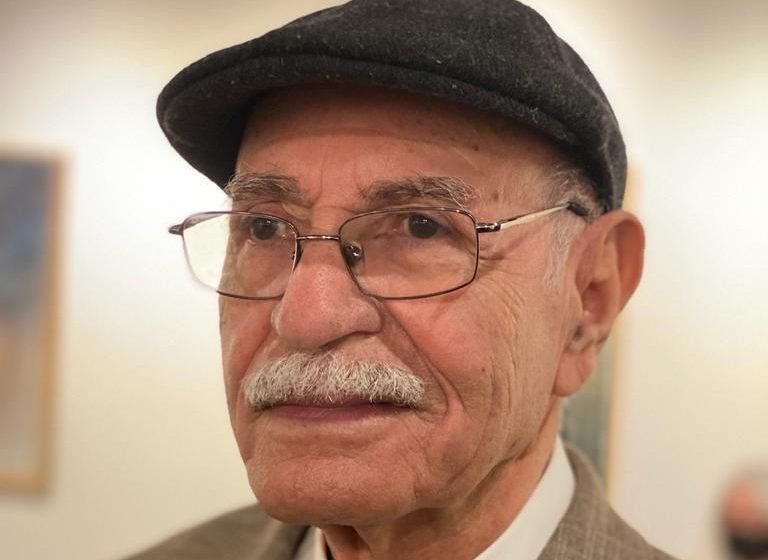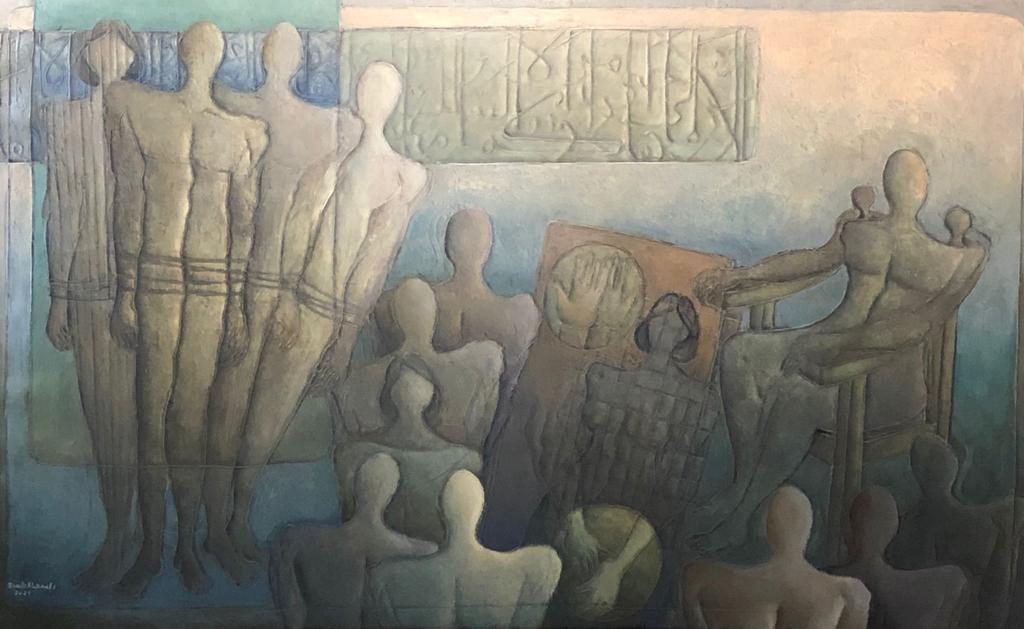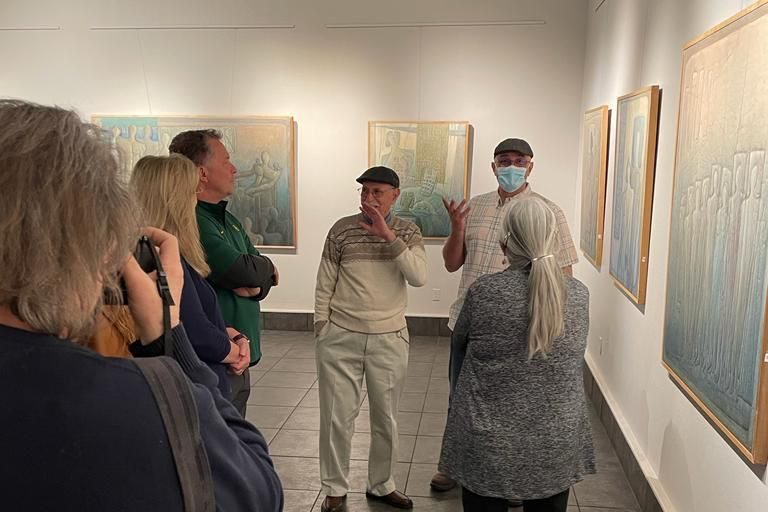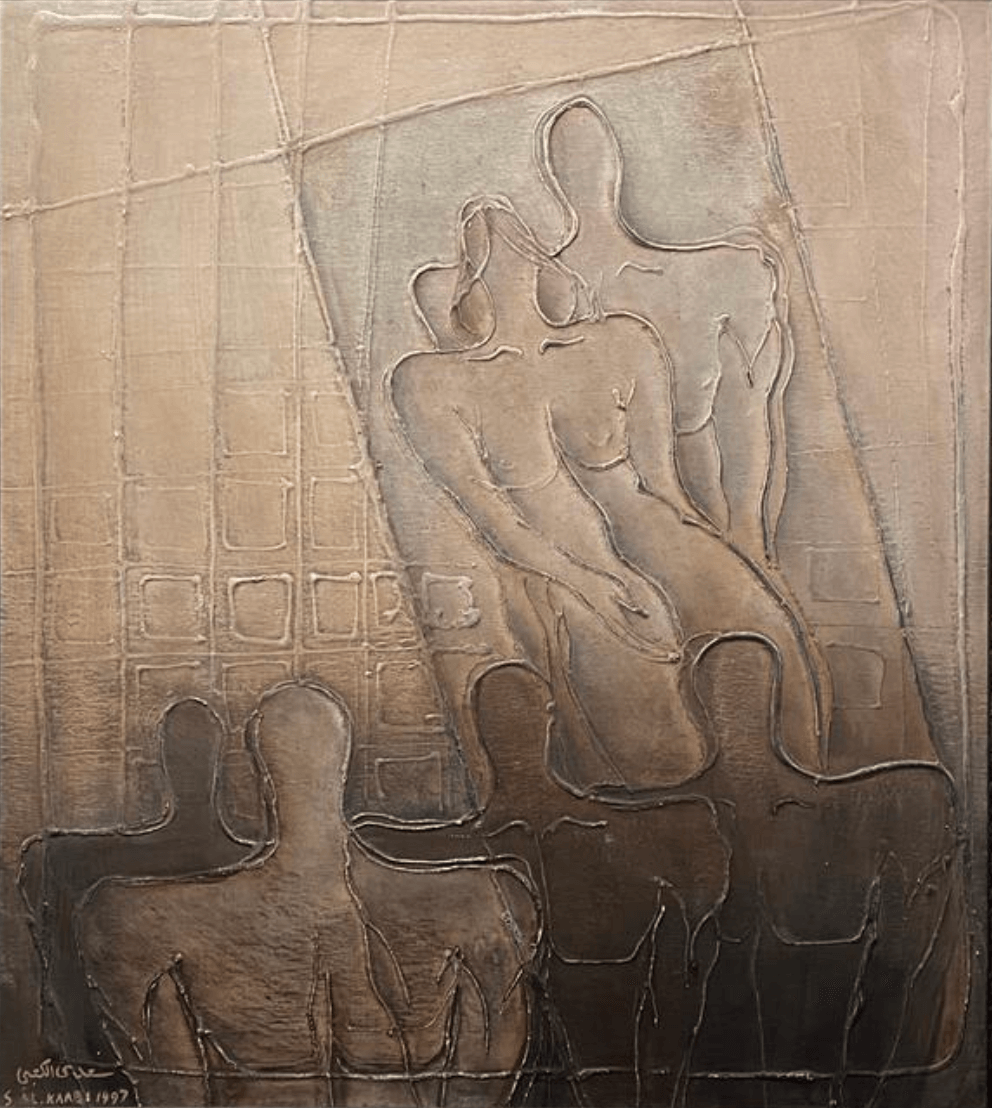Brushstrokes of Brilliance from Iraqi artist Saadi Al Kaabi

The old saying goes “a picture is worth a thousand words,” but maybe when it comes to the works of Iraqi artist, Saadi Al Kaabi, this “picture” is worth much more.
A creative child early on, Al Kaabi was born in 1937 in the city of Najaf, Iraq, just 19 miles from the ruins of Babylon – a site that influenced his paintings across the decades. Recalling his early childhood, Al Kaabi says: “Being one of nine children, we were brought up by the harsh realities of the dirt streets we roamed, just as much by our parents.” In fact, it seems Al Kaabi may have been raised by divine intervention, as attested by his genius.
Al Kaabi studied painting at the Institute of Fine Arts in Baghdad, graduating in 1960. Throughout his studies and immediately after, he was prolific in experimenting with different styles and directions. The vast and timeless space of the arid, sun-soaked desert became the essence of his work. His art highlights the harmony and balance of Mesopotamia – a central theme in every piece, unique in its own.

“We will always be the children of Mesopotamia, even if we are far away because the sun, the land and the culture are all in our genes,” says Al Kaabi to Iraqi News.
Al Kaabi is known for his earth tone displays, a consistent color palette in his art. He explains how this came to be: “Those of us from this land seem to be spiritually connected and dependent on the sun. We cannot thrive in darker countries as the sun is so central to our psyche and well-being having been bathed in it for millennia.”
Having formally educated himself in the ancient civilizations of Sumer, then Babylon and Ashur, his work subconsciously exudes elements of these civilizations from the emotional depictions of the Sumerians, to the magic of the ‘overseeing eye’ of the Babylonians, through the outright grandeur of the conquests of the Assyrians.
This would go on to be a distinct brand of his style, often reflecting this ethereal and ever-lasting emotional connection. “So that I am not limited to a certain time period, I removed the clothes off of those subjects in some of my paintings,” explains Al Kaabi. This epiphany influenced his later paintings, and could be considered provocative and risqué, depicting nudes and nature in earth hues. Another brand of his art was Arabic calligraphy and symbolism that adorned many of his paintings.
The embarkation on one’s artistic journey necessitates a deep and strong identity. This is because the very soul of the artist is in his identity. Furthermore, this identity is the summation of all the artist’s trials and tribulations. Essentially a precipitate made up of elements from his cultural heritage, his immediate surroundings, his education as well as his future vision. “All of these elements I consider real and palpable,” says Al Kaabi.
“We will always be the children of Mesopotamia, even if we are far away because the sun, the land and the culture are all in our genes.”
He believes that this identity must not be boxed by any rigid boundaries, not even by any one school of art or another. When the human travels to foreign land and meets new people, his perspective inevitably changes, and a true creative artist’s identity must evolve to mirror this.
Al Kaabi further elaborates that an artist must ascend to a higher level of subconsciousness and enter a state reminiscent of a trance whilst he is immersed in his creation. Essentially his creation, upon its completion is a permanent representation of this elevated state of being and while the artist must eventually ‘come down to earth,’ his creation ‘remains in heaven.’ As a result, it is often difficult for the artist to explain his creation – because it is essentially more evolved than him. “The painting, his work, is better than him,” says Al Kaabi.

“An artist is more than a skilled replicator,” he adds. “I can replicate a Picasso, but it would not speak to you as it should because, as a mere replica, it is devoid of any soul.” Al Kaabi explains that nowadays he often encounters something missing in the art. “They may showcase art skillful in its execution, however lacking any thought process or soul,” says Al Kaabi.
A giant amongst giants, it is astonishing that when asked how he would like to be remembered, Al Kaabi testifies: “I am just a mere man and those who believe that I am great don’t know me as I know myself.” He elaborates further that when he became “great” his artistic creativity withered and died, and that only when he defeated the demon of vanity was his creativity reborn.

Today, Al Kaabi resides in the United States, gaining traction from the West and adding a distinct and totally new dimension to the local art scene. The Mistlin Gallery in Modesto, California put on a special solo show earlier this year titled Discourse of Silence and was a testament to the enduring message of his art, attracting both old and new enthusiasts.
His advice to young Iraqis, whether home or abroad, is to educate themselves as much as possible, explore books and archives featuring the civilizations of their ancestors. “We are from the East whether we like it or not. You will stay connected to this land,” he says.
There is no easy description for the depth and complexity of Saadi Al Kaabi, or for the brilliant visions he continues to share with this world. He has held esteemed positions, countless exhibitions and won multiple prizes throughout the years. Despite all his success, he is humble, witty, well read and for as long as he can remember consumed with the human desire to put ink to paper. Perhaps just like his Sumerian ancestors who developed the first form of writing that the world has seen. A shining pillar of contemporary art in Iraq, Al Kaabi stands as one of its most famous, relevant and influential artists.


